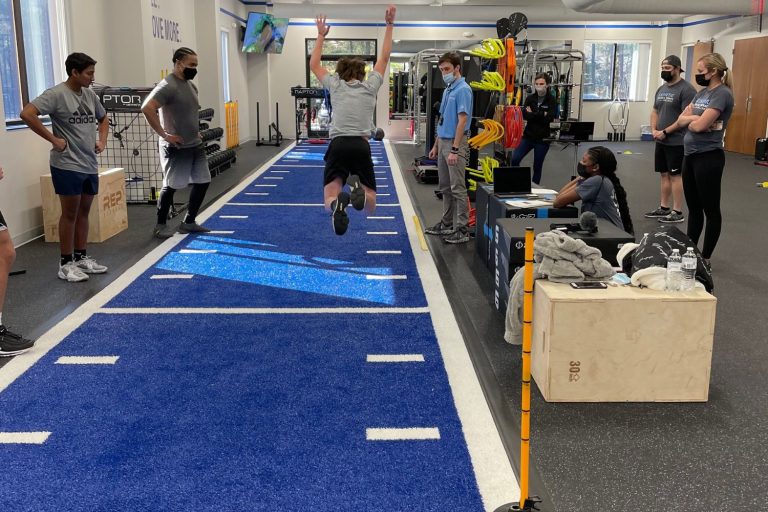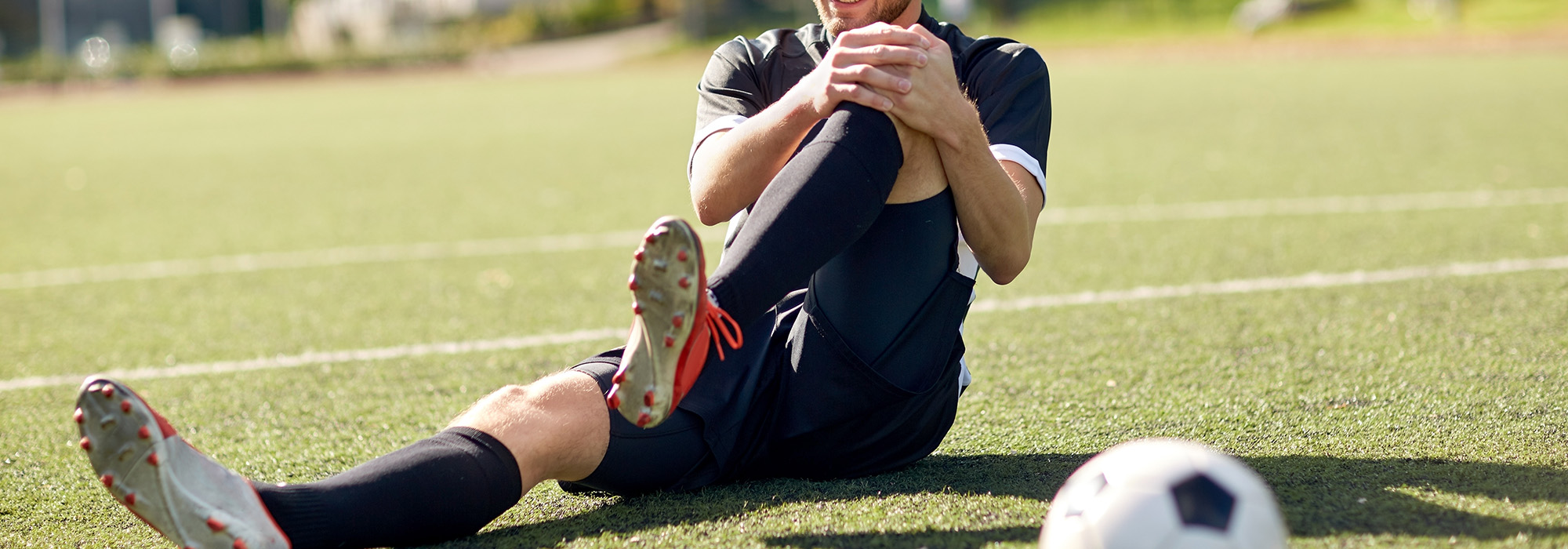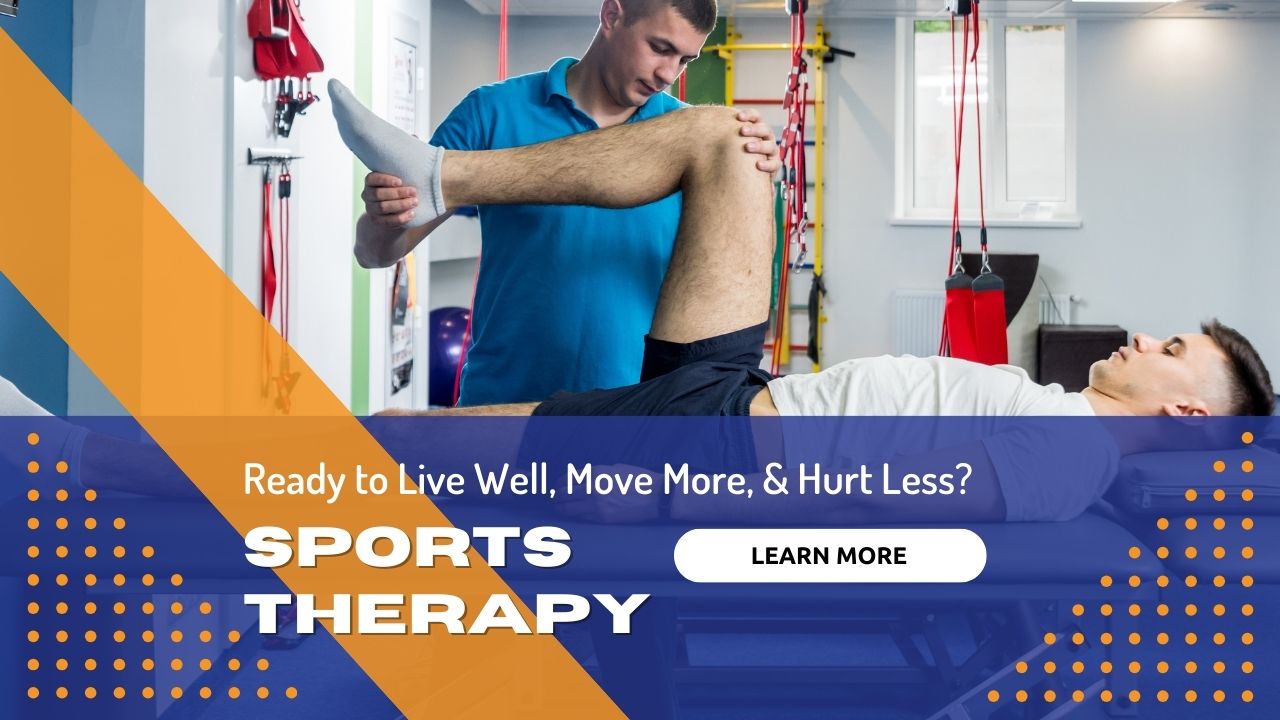

PT Helps Prevent ACL Injuries
If you’re even a casual sports fan you’re likely very familiar with the dreaded ACL tear that will end an athlete’s season. But what if there was a program that you could take part in that would help lower your chances of serious injury? A physical therapist might not be your first thought of someone to call for help, but we’re leading the charge on ACL injury prevention.
What is the ACL?
The Anterior Cruciate Ligament (ACL) is an important structure inside of the knee. Its job is to keep the shin (tibia) and thigh (femur) bone anchored together in a stable position. There are other structures that also help give stability, but for many people this tear can be life changing. Surgery cannot fully restore the mechanics of the knee, and not all people get back to their previous level of sport.
What is the risk of ACL injury?
ACL injuries, particularly in youth sports, are at epidemic levels. Between 1994 and 2006 we have seen a 924% increase in ACL surgery among patients 15 years old and younger, whereas the rest of the population has only seen a 37% rise! Female athletes in soccer and volleyball are at much higher risk due to differences in body structure, genetics, and hormone levels. Football gets a lot of attention for male athletes, but soccer, basketball, and other sports also have high rates of ACL injuries.
How can I reduce my child’s risk of injury?
A simple step that will reduce a child’s injury risk in general is to not play a single sport year-round. It is recommended to take at least 3 months out of each year off from the primary sport, and to play something different during that time. The time off from the primary sport will help prevent overuse injuries, and helps the athlete strengthen and improve coordination in ways the primary sport doesn’t; this can actually help the athlete with his/her primary sport when they return to it! Though this may seem counter-intuitive, statistics show that high school multi-sport athletes tend to do better at collegiate sports and are more likely to ultimately go pro. For example, 42 out of 47 of Ohio State’s 2015 football recruits were multi-sport athletes. Of 322 invites to the NFL combine, 87% were multi-sport athletes! This has led most major sporting organizations promoting multi-sport play.
How can Physical Therapy help?
Research shows that 26% of non-contact ACL injuries could be prevented by specific exercise programs. A Physical Therapist can use several tests to determine and reduce an athlete’s injury risk. For example, the Landing Error Scoring System (LESS) is a jump-landing test that has been shown to successfully identify athletes at high-risk for non-contact ACL injury. Once risk is identified, a PT will develop an individualized exercise program to correct the specific weaknesses and/or movement patterns that put the athlete at risk for injury. These exercises focus on how we move rather than specific strengthening or stretching exercises. This helps the athlete to maintain more control in these non-contact situations and reduces the chance of getting into a dangerous position. For example, these exercises can help an athlete focus on not dropping knees inwards during jumping and cutting movements. It’s my experience that these exercise programs not only reduce athletes’ injury risk, they also tend to improve athletic performance!
Andrew Walker has been a Physical Therapist for 13 years and lives in the “Rocket City” of Huntsville, Alabama. He is the owner of PhysioWorks Sports and Wellness, Inc. where he provides outpatient musculoskeletal physical therapy.
References use in the above article:
1. Buller LT, Best MJ, Baraga MG, Kaplan LD. Trends in Anterior Cruciate Ligament Reconstruction in the United States. The Orthopaedic Journal of Sports Medicine, 1015;3(1); 1-8.
2. Beynnon BD, Vacek PM, Newell MK, et al. The Effects of Level of Competition, Sport, and Sex on the Incidence of First-Time Noncontact Anterior Cruciate Ligament Injury. Am J Sports Med. 2014;42(8):1806-1812.
3. Myer GD, Ford KR, Di stasi SL, Foss KD, Micheli LJ, Hewett TE. High knee abduction moments are common risk factors for patellofemoral pain (PFP) and anterior cruciate ligament (ACL) injury in girls: is PFP itself a predictor for subsequent ACL injury?. Br J Sports Med. 2015;49(2):118-22.
4. Johnson JS, Morscher MA, Jones KC, et al. Gene expression differences between ruptured anterior cruciate ligaments in young male and female subjects. J Bone Joint Surg Am. 2015;97(1):71-9.
5. Hespanhol junior LC, Kamper SJ. Prevention of non-contact anterior cruciate ligament injuries: PEDro synthesis. Br J Sports Med. 2015;49(2):133-4.
Please Share
categories
Recent Posts
categories

PT Helps Prevent ACL Injuries
If you’re even a casual sports fan you’re likely very familiar with the dreaded ACL tear that will end an athlete’s season. But what if there was a program that you could take part in that would help lower your chances of serious injury? A physical therapist might not be your first thought of someone to call for help, but we’re leading the charge on ACL injury prevention.
What is the ACL?
The Anterior Cruciate Ligament (ACL) is an important structure inside of the knee. Its job is to keep the shin (tibia) and thigh (femur) bone anchored together in a stable position. There are other structures that also help give stability, but for many people this tear can be life changing. Surgery cannot fully restore the mechanics of the knee, and not all people get back to their previous level of sport.
What is the risk of ACL injury?
ACL injuries, particularly in youth sports, are at epidemic levels. Between 1994 and 2006 we have seen a 924% increase in ACL surgery among patients 15 years old and younger, whereas the rest of the population has only seen a 37% rise! Female athletes in soccer and volleyball are at much higher risk due to differences in body structure, genetics, and hormone levels. Football gets a lot of attention for male athletes, but soccer, basketball, and other sports also have high rates of ACL injuries.
How can I reduce my child’s risk of injury?
A simple step that will reduce a child’s injury risk in general is to not play a single sport year-round. It is recommended to take at least 3 months out of each year off from the primary sport, and to play something different during that time. The time off from the primary sport will help prevent overuse injuries, and helps the athlete strengthen and improve coordination in ways the primary sport doesn’t; this can actually help the athlete with his/her primary sport when they return to it! Though this may seem counter-intuitive, statistics show that high school multi-sport athletes tend to do better at collegiate sports and are more likely to ultimately go pro. For example, 42 out of 47 of Ohio State’s 2015 football recruits were multi-sport athletes. Of 322 invites to the NFL combine, 87% were multi-sport athletes! This has led most major sporting organizations promoting multi-sport play.
How can Physical Therapy help?
Research shows that 26% of non-contact ACL injuries could be prevented by specific exercise programs. A Physical Therapist can use several tests to determine and reduce an athlete’s injury risk. For example, the Landing Error Scoring System (LESS) is a jump-landing test that has been shown to successfully identify athletes at high-risk for non-contact ACL injury. Once risk is identified, a PT will develop an individualized exercise program to correct the specific weaknesses and/or movement patterns that put the athlete at risk for injury. These exercises focus on how we move rather than specific strengthening or stretching exercises. This helps the athlete to maintain more control in these non-contact situations and reduces the chance of getting into a dangerous position. For example, these exercises can help an athlete focus on not dropping knees inwards during jumping and cutting movements. It’s my experience that these exercise programs not only reduce athletes’ injury risk, they also tend to improve athletic performance!
Andrew Walker has been a Physical Therapist for 13 years and lives in the “Rocket City” of Huntsville, Alabama. He is the owner of PhysioWorks Sports and Wellness, Inc. where he provides outpatient musculoskeletal physical therapy.
References use in the above article:
1. Buller LT, Best MJ, Baraga MG, Kaplan LD. Trends in Anterior Cruciate Ligament Reconstruction in the United States. The Orthopaedic Journal of Sports Medicine, 1015;3(1); 1-8.
2. Beynnon BD, Vacek PM, Newell MK, et al. The Effects of Level of Competition, Sport, and Sex on the Incidence of First-Time Noncontact Anterior Cruciate Ligament Injury. Am J Sports Med. 2014;42(8):1806-1812.
3. Myer GD, Ford KR, Di stasi SL, Foss KD, Micheli LJ, Hewett TE. High knee abduction moments are common risk factors for patellofemoral pain (PFP) and anterior cruciate ligament (ACL) injury in girls: is PFP itself a predictor for subsequent ACL injury?. Br J Sports Med. 2015;49(2):118-22.
4. Johnson JS, Morscher MA, Jones KC, et al. Gene expression differences between ruptured anterior cruciate ligaments in young male and female subjects. J Bone Joint Surg Am. 2015;97(1):71-9.
5. Hespanhol junior LC, Kamper SJ. Prevention of non-contact anterior cruciate ligament injuries: PEDro synthesis. Br J Sports Med. 2015;49(2):133-4.
Please Share









